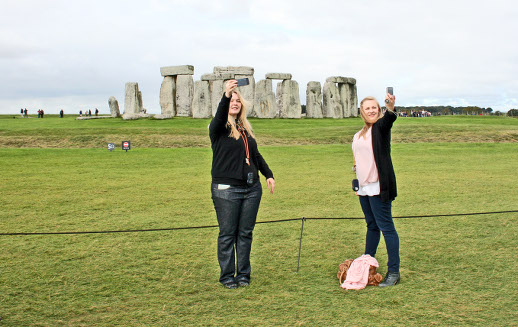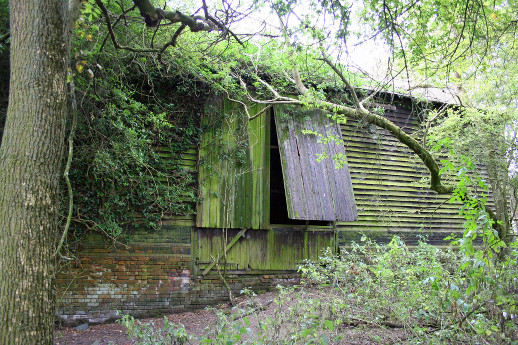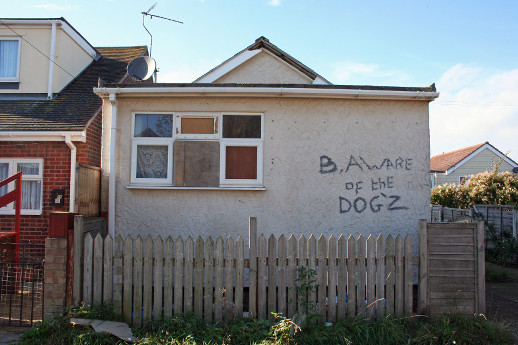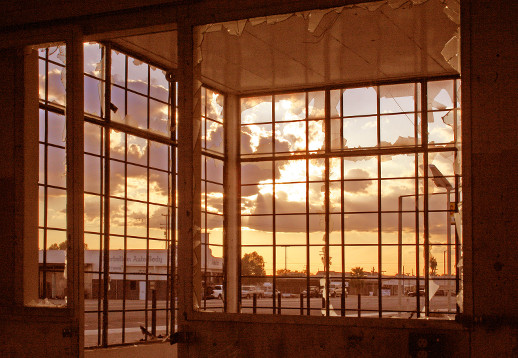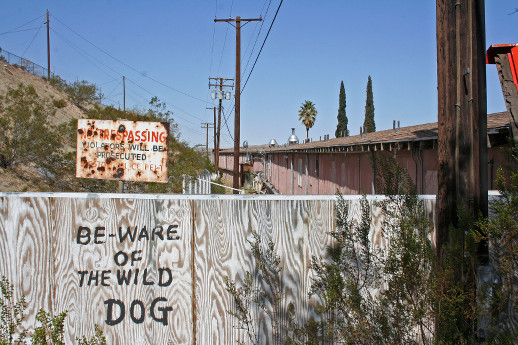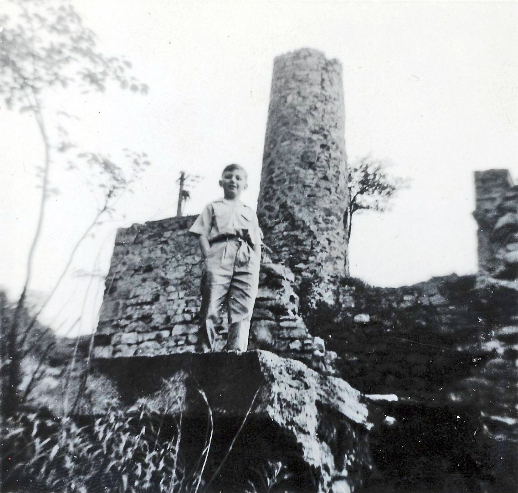By Geoff Nicholson
ONE:
If, like me, you happen to have written a book titled The Lost Art of Walking, people tend to ask you, “What’s your favourite walk?” I always find this a really difficult question. I want to answer honestly, and I definitely don’t want to be evasive or pretentious, but the answer always escapes me.
More and more I find that if I’m in walking in an area of unspoiled natural beauty, or in a city of great vistas and magnificent architecture, I’ll be impressed, I’ll be appreciative, but the truth is, I’m often slightly bored in these places. Only a fool would bad-mouth the Champs-Élysées or the Lake District, but I just don’t get very excited about walking there. Whereas if I’m walking along a beach and discover some ruined bungalows, or if I’m at the edge of a city and find a wrecked and abandoned warehouse or barn, then I’m fascinated, I’m moved. And that’s why I’ve written a new book titled Walking in Ruins.
Once you’ve got the idea in your head, you really don’t have to go looking for ruin, you can find it by walking just about anywhere. Sure, the Acropolis is a fine place to walk, but there’s no need to go that far. Set out walking just about anywhere, in town or countryside or suburb and chances are that you’ll soon come across some form of ruin.
*
TWO:
I was walking in Jaywick, in Essex, a place that people had been telling me about for years, describing it as weird, bleak, melancholy, vaguely threatening: all the things I love and am drawn to in a place.
Jaywick is by no means a ruined town, but it is a town containing plenty of ruined buildings, some of them once neat, miniature seaside cottages or chalets, there were now abandoned, smashed up, sprayed with ambitionless graffiti, in some cases completely burned out. Other houses, neat, and well-cared-for, nestle all too close to the ruins.
I was walking there to satisfy my curiosity, I had no grand walking project in mind. I threaded my way through the side streets, looking at some of the charming and some of the charmless little dwellings, and I came across a small bungalow with a pitched roof and a square extension built out the back, pressed up against a low wooden fence. And on the wall below the back window somebody had painted, with a brush rather than a spray can, in big, misshapen, irregular letters, “B.AWARE of the DOG’Z.”
Was this really as lame as it looked, just somebody’s attempt to warn off trespassers? Maybe, but wasn’t painting something so ugly on your own house a bit idiotic? Or was it cleverer than it looked, in fact saying, “Look, I’m crazy enough to vandalize the exterior of my own home, you’d better not mess with me”? Or had it not been done by the house owner, was it a graffito? Were the DOG’Z a gang, a band, a set of rappers, a posse? Was the whole thing some Banksy-esque pastiche of tagger stupidity? I don’t expect ever to know.
*
THREE:
For reasons that make more sense on some days that others, I currently live in Los Angeles. Sometimes I think I only live here because it’s so close to the desert. Get in the car and drive for two hours and you can be walking across some barren but gorgeous stretch of the Mojave. Deserts, walking and ruin go together pretty well.
One major route into the desert takes you through the city of Barstow, best known, if it’s known at all, from the opening of Hunter S. Thompson’s Fear and Loathing in Las Vegas, “We were somewhere around Barstow, on the edge of the desert when the drugs began to take hold.” It’s a great line, but one that raises a few questions. By the time you get to Barstow you’re already well beyond the desert edge, and if you’ve driven from Los Angeles, and if you took the drugs as you set off, and Hunter S. never struck me as a man with a taste for delayed gratification, they’d have taken hold long before you got there.
Barstow itself isn’t most people’s idea of a walking town. Temperatures rise to the low hundreds in July and August, and the main drag is long, very steep in places, with wide gaps between the various, not especially enticing motels, fast food joints, gas stations, and understocked supermarkets, and in certain stretches there are as many closed down stores as there are open ones.
Even so, you see a surprising number of people walking, and most of them don’t look like they’ve had much choice in the matter. They’re walking because they’re poor, without cars, and sometimes without homes. They look like they’ve been that way for a good long time, and that nothing’s going to change in the near future. They look, essentially, ruined. Some, no doubt, were recently, and possibly soon will be again, incarcerated in the local Barstow Jail, which frees its inmates onto the streets there.
I like to walk around Barstow early in the morning, when the sun is low and the shadows are long, the pale blue desert hills look quite beautiful, and I’m the only person visible on the street. Last time I was there I took a walk along East Main, over the rail bridge, with a dozen or more tracks curling gently below, and on the other side I came to a line of broken down shacks and houses, across from the old station. This was my kind of territory, the kind of place I like to walk and poke around, many of the buildings certainly looked like ruins, although some didn’t, not quite, or at least not yet. As I walked among them, I couldn’t tell which houses were inhabited, which ones were genuine ruins. One of the most derelict-looking, I discovered, was home to a large and essentially cheerful Latino family who were every bit as surprised by my sudden presence as I was by theirs.
I walked back to the main strip, through a parking lot adjacent to the Desert Motel, by no means the worst-looking accommodation in town. There were a handful of no trespassing signs, different shapes and sizes, one of them perforated with bullet holes. And just to hammer home the message, painted on the wooden boundary fence, by someone who might easily have some kin over in Jaywick, the message “BE-WARE OF THE WILD DOG.” Who knew that “beware” would present such problems to the uncertain speller? This one definitely wasn’t a Banksy-esque pastiche, or the name of the band or posse; the motel management really didn’t want anybody poking around behind their motel. You could understand that. On the other hand I couldn’t imagine there was really a wild dog loose in the motel grounds: at the very least wouldn’t that be bad for business? I certainly saw no sign of a dog, any more than I saw one behind the bungalow in Jaywick. Neither Barstow nor Jaywick is strictly speaking a ghost town, but maybe both have ghost dogs.
Geoff Nicholson’s Walking in Ruins is published by Harbour Books.
He runs a blog, The Hollywood Walker
Both Walking In Ruins and it’s brilliant predecessor, The Lost Art Of Walking are available in the Caught by the River shop.
